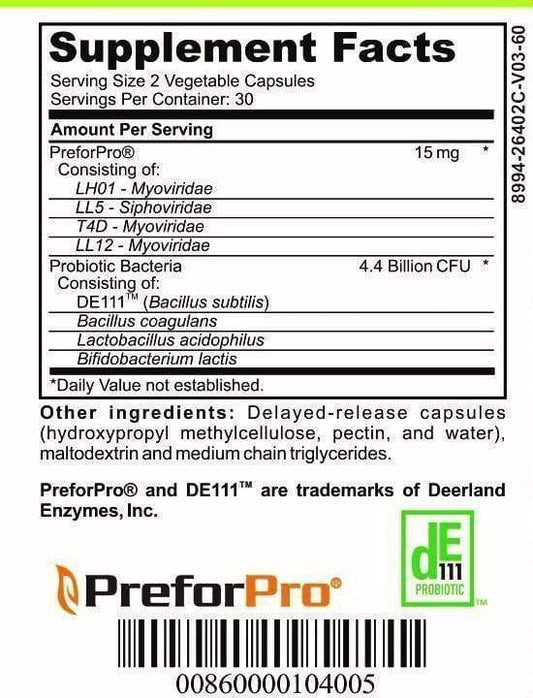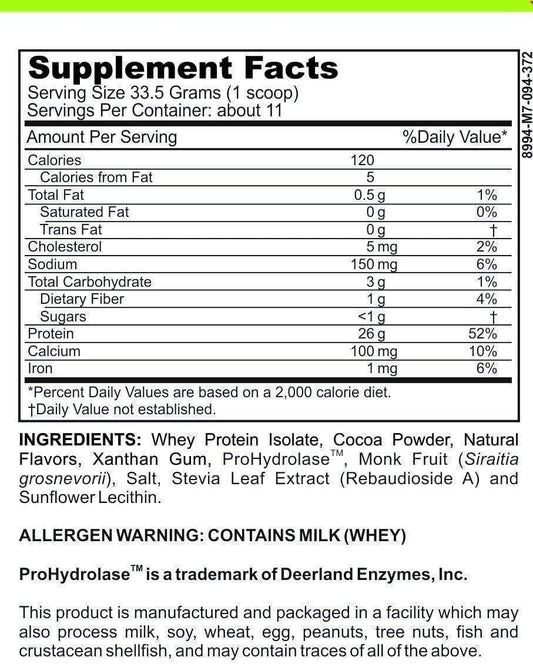Monosaccharides vs. Polysaccharides: Understanding the Key Differences
Monosaccharides vs. Polysaccharides: Understanding the Key Differences
Carbohydrates are essential macronutrients that play crucial roles in our bodies, from providing energy to supporting cellular structure. However, not all carbohydrates are created equal. At the most fundamental level, carbohydrates are classified based on their molecular structure and complexity, with monosaccharides and polysaccharides representing opposite ends of the spectrum. Understanding the differences between these carbohydrate types can help us make more informed dietary choices and appreciate the intricate biochemistry that powers our bodies.
The Basics of Carbohydrate Structure
Before diving into the specific differences between monosaccharides and polysaccharides, it's important to understand what carbohydrates actually are. At their core, carbohydrates are organic compounds composed of carbon, hydrogen, and oxygen atoms, typically in a ratio of 1:2:1. Their name derives from this composition – "carbo" referring to carbon and "hydrate" indicating the presence of water (H₂O).
Carbohydrates are classified based on their complexity, which is determined by the number of sugar units they contain. This classification system gives us three main categories: monosaccharides (simple sugars), oligosaccharides (short chains of simple sugars), and polysaccharides (long chains of simple sugars). The relationship between these forms is hierarchical – monosaccharides serve as the building blocks for more complex carbohydrates.
The Chemical Foundation
At the molecular level, carbohydrates typically contain carbonyl groups (either aldehydes or ketones) and multiple hydroxyl groups. These functional groups are what give carbohydrates their unique chemical properties and reactivity. The arrangement of these groups determines the specific type of sugar and influences how it behaves in biological systems.
The chemical formula for most simple sugars follows the pattern (CH₂O)n, where n is typically between 3 and 7. This seemingly simple formula belies the incredible diversity of carbohydrate structures found in nature, each with distinct functions and properties.
Monosaccharides: The Simple Sugars
Monosaccharides are the simplest form of carbohydrates and serve as the fundamental units from which all other carbohydrates are built. The term "monosaccharide" comes from the Greek words "mono" (single) and "sacchar" (sugar), aptly describing their nature as single sugar units that cannot be broken down into simpler sugars through hydrolysis.
These simple sugars typically contain between three and seven carbon atoms, with the most biologically significant being the hexoses (six-carbon sugars) and pentoses (five-carbon sugars). Despite their relatively simple structure, monosaccharides play vital roles in numerous biological processes.
Common Types of Monosaccharides
The most abundant monosaccharide in nature is glucose (C₆H₁₂O₆), often referred to as blood sugar. Glucose serves as the primary energy source for most organisms, including humans. Our bodies break down more complex carbohydrates into glucose, which is then transported through the bloodstream to cells where it's used to produce energy through cellular respiration.
Other important monosaccharides include fructose (fruit sugar), galactose (found in dairy products), and ribose (a component of RNA). Each of these simple sugars has a slightly different molecular structure, which affects how our bodies process and utilize them. For instance, fructose is metabolized primarily in the liver, while glucose can be used by virtually all cells in the body.
Structural Characteristics
Monosaccharides can exist in different structural forms. In solution, they often form ring structures rather than remaining in their open-chain form. The most common ring structures are the six-membered pyranose ring (like glucose) and the five-membered furanose ring (like the form fructose often takes). These ring structures are crucial for the formation of glycosidic bonds, which link monosaccharides together to form more complex carbohydrates.
Another interesting feature of monosaccharides is their ability to exist as stereoisomers – molecules with the same chemical formula but different spatial arrangements of atoms. This property leads to the designation of D- and L-forms of sugars, with most naturally occurring sugars being in the D-configuration.
Absorption and Metabolism
One of the key advantages of monosaccharides is their ready absorption in the digestive tract. Unlike more complex carbohydrates, monosaccharides don't require enzymatic breakdown before absorption. They can pass directly from the intestinal lumen into the bloodstream, providing a rapid source of energy. This quick absorption is why foods high in simple sugars can cause rapid spikes in blood glucose levels.
Polysaccharides: The Complex Carbohydrates
In contrast to monosaccharides, polysaccharides are large, complex molecules composed of many monosaccharide units linked together by glycosidic bonds. The term "polysaccharide" derives from "poly" (many) and "sacchar" (sugar), accurately describing their structure as chains of many sugar units. These chains can contain hundreds or even thousands of monosaccharide units, creating molecules with high molecular weights and complex three-dimensional structures.
Polysaccharides serve diverse functions in nature, from energy storage to structural support in plants and animals. Their complexity allows for a wide range of properties and functions that simple sugars cannot provide.
Major Types of Polysaccharides
Starch is perhaps the most familiar dietary polysaccharide, serving as the primary storage form of glucose in plants. Found abundantly in foods like potatoes, rice, and wheat, starch consists of two types of glucose polymers: amylose (a linear chain) and amylopectin (a branched structure). When we consume starchy foods, digestive enzymes gradually break down these complex structures into glucose molecules that our bodies can absorb and use.
Glycogen serves a similar function to starch but in animals rather than plants. Often called "animal starch," glycogen is the primary storage form of glucose in humans and other animals, primarily found in the liver and muscles. It has a highly branched structure that allows for rapid breakdown when energy is needed, making it an ideal energy reserve for quick bursts of activity.
Cellulose, another glucose polymer, serves a completely different function. As the primary structural component of plant cell walls, cellulose provides rigidity and protection. Unlike starch, the glucose units in cellulose are linked by β-glycosidic bonds, which human digestive enzymes cannot break down. This is why we cannot extract energy from cellulose, though it serves as important dietary fiber that aids in digestion.
Structural Complexity and Diversity
The structural diversity of polysaccharides is remarkable. Beyond the examples mentioned above, there are countless other polysaccharides with unique structures and functions. Chitin, for instance, forms the exoskeletons of arthropods and the cell walls of fungi. Pectin, found in the cell walls of terrestrial plants, is used as a gelling agent in food. Hyaluronic acid, a component of connective tissue in vertebrates, provides lubrication in joints and maintains skin hydration.
This structural diversity arises not only from the types of monosaccharides involved but also from the ways they're linked together. The specific pattern of glycosidic bonds, the presence of branches, and the overall three-dimensional arrangement all contribute to the unique properties of different polysaccharides.
Key Differences Between Monosaccharides and Polysaccharides
Having explored both monosaccharides and polysaccharides individually, let's directly compare these two classes of carbohydrates across several important dimensions.
Structural Complexity
The most obvious difference between monosaccharides and polysaccharides lies in their structural complexity. Monosaccharides are single sugar units with relatively simple structures, while polysaccharides are large, complex molecules composed of many monosaccharide units linked together. This difference in complexity affects virtually every aspect of how these carbohydrates behave in biological systems.
The simple structure of monosaccharides makes them water-soluble and easily transported across cell membranes (with the help of specific transporters). In contrast, many polysaccharides are insoluble or form colloidal solutions due to their size and complexity, requiring enzymatic breakdown before they can be absorbed or utilized by cells.
Digestibility and Energy Release
The digestibility of carbohydrates directly correlates with their complexity. Monosaccharides require no digestion and are absorbed directly into the bloodstream, providing a rapid source of energy. This quick absorption can lead to spikes in blood sugar levels, followed by corresponding insulin responses. Foods high in simple sugars, like candy or soda, are often described as having a high glycemic index because of this rapid effect on blood glucose.
Polysaccharides, on the other hand, require enzymatic breakdown before absorption. This process takes time, resulting in a slower, more gradual release of glucose into the bloodstream. Foods rich in complex carbohydrates, like whole grains and legumes, typically have a lower glycemic index and provide more sustained energy. Some polysaccharides, like cellulose, resist digestion entirely and pass through our digestive system largely intact, providing bulk that aids in digestion.
Biological Functions
Monosaccharides primarily serve as energy sources in biological systems. Glucose, in particular, is the preferred energy substrate for most cells, especially brain cells which are highly dependent on a constant glucose supply. Some monosaccharides also serve as building blocks for more complex molecules or participate in specific metabolic pathways.
Polysaccharides serve a broader range of functions. Some, like starch and glycogen, function as energy storage molecules. Others, like cellulose and chitin, provide structural support. Still others play roles in cell recognition, immune function, and various other biological processes. This functional diversity reflects the structural diversity of polysaccharides and underscores their importance in biological systems.
Conclusion
The distinction between monosaccharides and polysaccharides represents a fundamental concept in biochemistry and nutrition. From the simple, readily absorbed structure of glucose to the complex, slowly digested chains of starch, the spectrum of carbohydrate complexity influences how these molecules function in our bodies and the foods we eat.
Understanding these differences can help us make more informed dietary choices. While simple sugars provide quick energy, complex carbohydrates offer more sustained energy release and often come packaged with other beneficial nutrients like fiber, vitamins, and minerals. A balanced diet typically includes both types of carbohydrates, with an emphasis on complex carbohydrates from whole food sources.
As we continue to learn more about the intricate biochemistry of carbohydrates, we gain a deeper appreciation for the elegant ways in which these molecules support life. From the glucose that powers our cells to the cellulose that gives plants their structure, carbohydrates in all their forms remain essential components of the biological world.





























